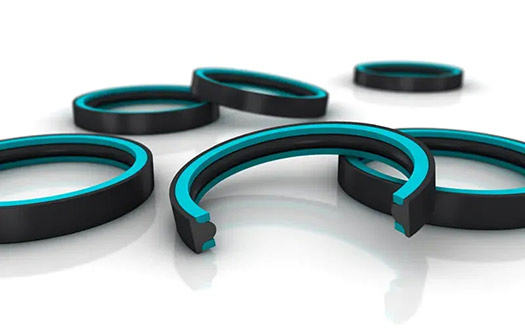January 2024, Vol. 251, No. 1
Tech Notes
Addressing Sealing Challenges Associated with Smart Meters
By Jerry Schmitz, Global Segment Director, Trelleborg Sealing Solutions
Smart gas meters enable companies, households and municipalities to remotely access data and device functionality through a network, such as Wi-Fi, a portal or a cellular phone network. The U.S. smart meter market is projected to reach $7.69 billion by 2027 at a CAGR of 10.47%, according to Allied Marketing Research.
This growth is driven by the energy-saving and cost-reduction opportunities of smart meters integrated into advanced metering infrastructure (AMI) systems, which reduce labor and operational costs by eliminating the need for technicians to collect meter data in situ.
Smart meters using AMI can also detect and help reduce non-revenue water and gas leaks in distribution networks, increasing billing accuracy and reducing customer queries and complaints by automatically sharing usage information.
Access to accurate, real-time information encourages reduced consumption as people become more mindful of their energy and water usage, decreasing demand for water, fossil fuels and lowering emissions of carbon dioxide and other pollutants.
For utilities, smart meters also provide insight into peak demand periods, allowing them to incentivize consumers to shift energy intensive activities to off-peak hours. This reduces strain on the system at peak times, leads to more balanced distribution and reduces the overall system excess capacity.
Smart, Sealed
Inside these meters, components in contact with water or gas need to be sealed correctly, to prevent leaks and malfunctions. As smart meter original equipment manufacturers (OEMs) design more advanced meters and update traditional meters, they need a polymer components partner able to provide insight on sealing requirements and help bring innovative and reliable products to market faster.
An expert sealing manufacturer can help OEMs save time and money, by customizing components from field-proven designs and compounds. A sealing partner’s materials, labs and engineers can also collaborate with OEMs on design challenges.
Gas Meters
Residential gas meter technology is expanding beyond traditional meters, which use diaphragms. New ultrasonic residential gas meters give utility companies greater intelligence and control, via a compact and durable design, but they still require several sealing components to avoid leaks.
These components are custom-molded, and innovative seal manufacturers — such as Trelleborg Sealing Solutions — have proprietary compounds enabling customers to select the optimal material for a specific application. The use of custom compounds can also improve customers’ control over supply chain issues that can be experienced when using standard materials.
In some instances, traditional gas meters will not be replaced with ultrasonic technology but instead receive cost-effective updates. Diaphragm gas meters use mechanical motion to measure the amount of gas flow. The diaphragm fills up with gas and then releases some of it through the meter. This process repeats to accurately measure the amount of gas a user consumes.
Traditionally these diaphragms are made through a two-step process, where an elastomer diaphragm is laminated to fabric. Trelleborg has a compound formulation (523SE) for diaphragm designs that evenly distributes specially formulated aramid fibers of nitrile butadiene rubber (NBR) within the elastomer compound, eliminating the risk of delamination that is possible within the two-step manufacturing process.
This solution is more cost-effective as it eliminates the requirement for a post-process step during manufacturing. The diaphragm’s exceptional durability and rigidity mean less maintenance, extending its life and improving performance in extreme conditions.
Conclusion
Smart meter technology benefits the consumer, utility companies and the environment, because it can save time, money and energy. It eliminates the need for in-person meter readings and automatically notifies customers of leaks, as well as providing them with accurate billing information.
Utility companies better understand how to distribute water and gas with less waste and non-revenue losses now. As the adoption of smart meter technology continues, OEMs will need component suppliers that can keep pace with demand and provide optimal sealing solutions for these smart devices.






Comments